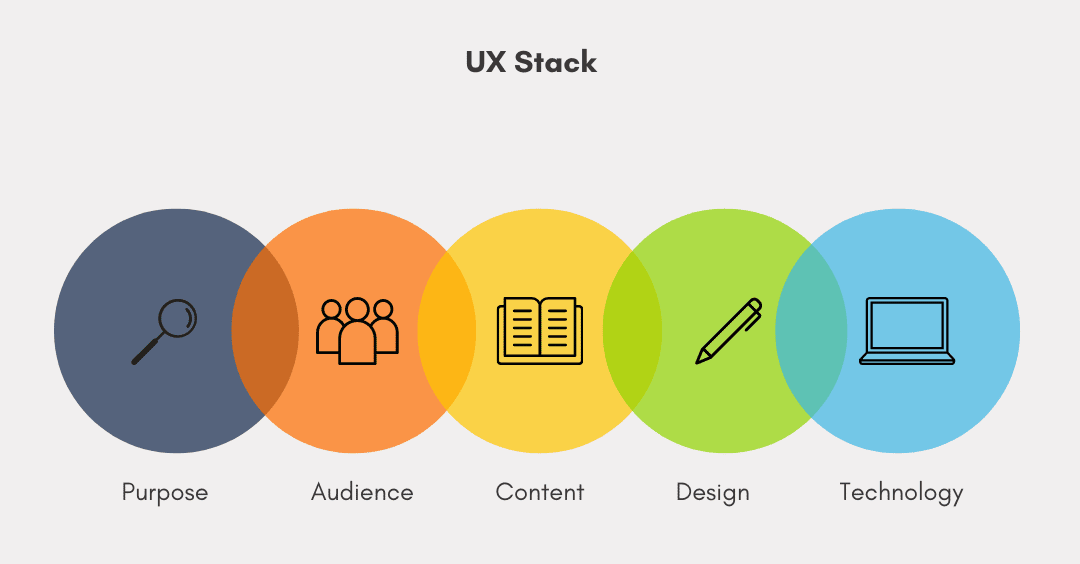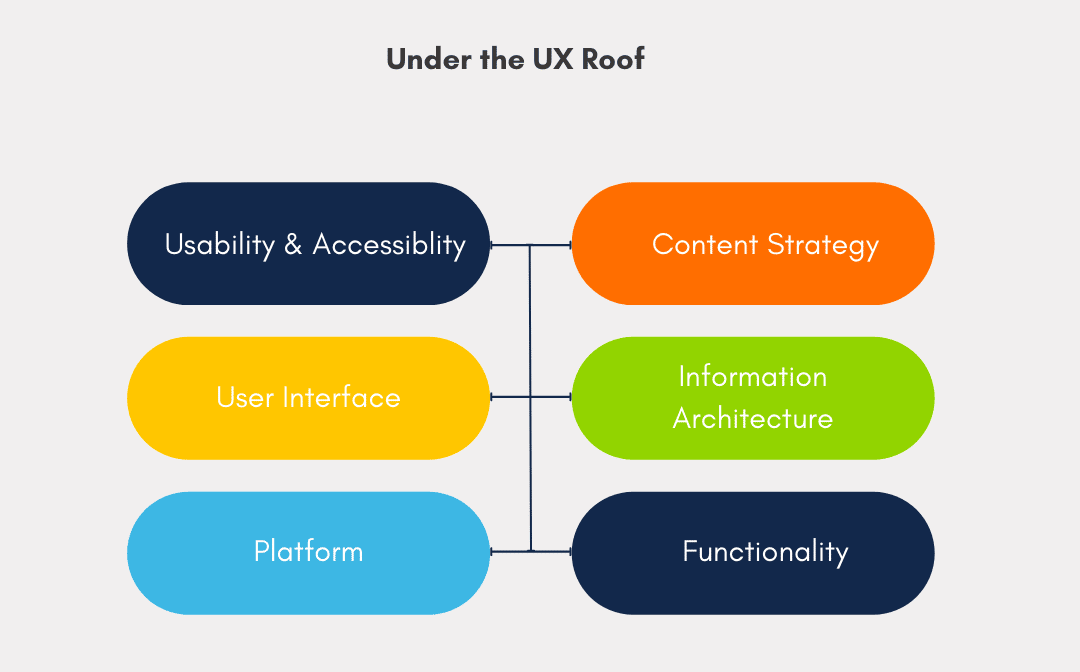Intro to Content Strategy
In my role, I recruit Content Strategists on a regular basis. But many people – candidates and hiring managers alike – are unsure what it is and why it’s important. And, even more valuable, how it plays a role in User Experience (UX).
Below are answers to the most common questions I hear about Content Strategy. If this is TLDR (too long, didn’t read), check out this infographic that sums it up instead.
What is Content Strategy?
Tangible UX defines content strategy as “the process of crafting quality content that is data-driven and informed by an audience’s needs, with clear governance, and created with an efficient process. It is delivering content in a well-organized and useful way to the right person at the right time on the right platform.”
Content in the digital world can be any of the text on a website (including blogs, ebooks, white papers, etc.), and also images, video, audio, data, social media and email. The purpose of Content Strategy is to have a clear process and strategy for the above-mentioned content by identifying the needs and goals of the target audience. And when you discover what channels the audience uses, when they use them and why, a Content Strategist can determine what content belongs there.
According to HubSpot research, the top four content formats leveraged in Content Strategy are videos, blogs, images and infographics with video being the number one format in 2021. Prior to that, blogs were in the number one position because of the value they also deliver. Per Lauro Media, in 2021, companies that blog regularly experience ROI 13 times greater than those who don’t. And that’s why content is still king.
So, what does Content Strategy have to do with UX?
It wasn’t until the last decade that UXers realized the value of including content in the UX strategy. Many times, you’d see content and design treated as separate entities. Why? Well, according to Kristina Halvorson, author of Content Strategy for the Web, “It’s inherently impossible to design great UX for bad content.” If you focus on delivering a great user experience, part of that has to be providing useful, usable and engaging content. Thus, the need for Content Strategists.
Content Strategy is technically not part of UX but has a direct impact on the content end product. It is a part of the UX Stack that helps dictate what content needs to be created and why.

The items under the UX Roof – which includes Content Strategy – work together to deliver a better overall user experience.

I read a great analogy during my research of how UX and Content Strategy work together. Imagine a cookie jar. You can recognize a cookie jar even at a distance because it follows certain intuitive design cues that your brain recognizes. Now imagine that you open that cookie jar and inside are not cookies, but carrots instead. That would be an ineffective Content Strategy. Even though the cookie jar is recognizable for what it is, the content inside does not fulfill your ‘need’ for cookies. If the content is not what the user needs, the overall user experience will suffer.
How is UX Writing different than Content Strategy?
UX Writing has recently become known as a distinct content area. The general definition, per UX Magazine, is the practice of creating user interface (UI) copy that helps users easily interact with a digital product (a website, an app, an online tool, etc.).
Before UX Writing was a thing, UI copy was often written by developers who had a good idea of how the product worked but probably weren’t the best people to write the copy. It most likely resulted in unnecessarily complex descriptions that discouraged users from interacting with the digital product.
UX writing can fix this problem by ensuring digital product copy focuses on the users to make it easy for them. This is accomplished through user research, collaboration with developers and clear writing. So, where UX Writers are more focused on copy that helps the users navigate through a product, the Content Strategist is centered on other content types such as blog posts, marketing emails, white papers and such.
Why is Content Strategy important?
In today’s world, we are bombarded with content from every direction. And that means competition for people’s attention is fierce. The average person consumes content at a rate of around 7 hours per day, according to Forbes.
A Content Strategist can make sure your content is findable and useful to your target audience. And consumers expect content to be catered to them when and where they want it. CMO by Adobe states that 67% of consumers say it’s important for brands to automatically adjust their content based on their current context for a real-time personalized experience. That kind of experience is possible with a well-planned Content Strategy that complements your overall UX Strategy.
What skills should I look for in a Content Strategist?
To succeed in your Content Strategy, you will need the following skills in a Content Strategist:
- Storytelling – key for telling your brand story
- Empathy – recognize what the audience needs, which content can help, and how it can resonate with them
- Writing – good long-form writing skills and short-form are necessary (even if they’re not the ones doing the actual writing)
- SEO – grasping the concepts of keywords, visitor search intent and on-page optimization
- Social media – to promote content on your social channels
- Editorial – to manage editorial style and execute a content schedule
- Data analysis – to inform the ‘why’ behind the content strategy they create
- Technical – not an IT expert, but knows the potential and limitations of the tools
- Communication and coaching – clearly articulate thoughts on the goals of the content and educate others on the ‘why’ behind the strategy
How much does a Content Strategist make?
The national average base salary (per hour for contract roles would be higher) for a Content Strategist, per LinkedIn Talent Insights, is $93,700. This doesn’t include bonuses, stock options, sign-on bonuses, etc. It varies around the country, though. For example, in San Francisco, the location with the most Content Strategists, the average is $107,700, well above the national average.
How do I find a Content Strategist?
By partnering with a workforce solutions company, like Synergis, of course! In all seriousness, it is a good idea to choose a partner to help you find this in-demand and hard-to-find skill set. You should look for a partner that has success placing this skill set to have the best outcome with your candidate’s needs. Reach out to me or any of us at Synergis to get started.
About the author
Haley Martin serves as a Creative Recruiter in our Atlanta office. She earned a bachelor’s degree in Mass Communication with a minor in Marketing from Georgia College & State University. In her spare time, she enjoys spending time with her family and friends. As a new Atlanta local, she enjoys trying new restaurants in the city.
Share this article
Let's get started.
"*" indicates required fields
